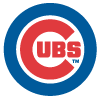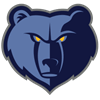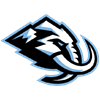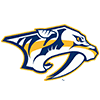The indefinite suspension of MLB, MiLB and fantasy baseball seasons are obviously a minor inconvenience compared to everything else going on in the world. However, in an effort to provide a distraction during this difficult period, I am going to peel back the curtain of my top-400 prospect rankings. This 11th article will cover my updated 251-275 prospects. I will continue this series, working down my top-400 prospect rankings every week throughout this hiatus.
In addition to each player's rank, I have noted where I believe the tiers are in the rankings and where each prospect was ranked on 10/1/19 and 1/1/20 (there are now graphs on each player's page to show how their ranking on the top 400 has changed), to provide a glimpse of how my valuation of these prospects has evolved throughout the offseason and spring training. For the players who saw big jumps from 10/1/19 to 1/1/20, my evaluation of that player changed significantly when I was able to do a deep dive on them while writing their outlook (available at the top right of each player page) for the magazine. Sometimes when I'm writing up a player, I have that ah-ha moment where I realize they need to be bumped quite a bit higher/lower, which is why there is sometimes significant movement when games aren't being played. The tier from last week's article that began with Andres Gimenez at No. 246 continues over to this week's list, so there is one big tier from 246-275
The indefinite suspension of MLB, MiLB and fantasy baseball seasons are obviously a minor inconvenience compared to everything else going on in the world. However, in an effort to provide a distraction during this difficult period, I am going to peel back the curtain of my top-400 prospect rankings. This 11th article will cover my updated 251-275 prospects. I will continue this series, working down my top-400 prospect rankings every week throughout this hiatus.
In addition to each player's rank, I have noted where I believe the tiers are in the rankings and where each prospect was ranked on 10/1/19 and 1/1/20 (there are now graphs on each player's page to show how their ranking on the top 400 has changed), to provide a glimpse of how my valuation of these prospects has evolved throughout the offseason and spring training. For the players who saw big jumps from 10/1/19 to 1/1/20, my evaluation of that player changed significantly when I was able to do a deep dive on them while writing their outlook (available at the top right of each player page) for the magazine. Sometimes when I'm writing up a player, I have that ah-ha moment where I realize they need to be bumped quite a bit higher/lower, which is why there is sometimes significant movement when games aren't being played. The tier from last week's article that began with Andres Gimenez at No. 246 continues over to this week's list, so there is one big tier from 246-275
| Rank | Player | 10/1/19 | 1/1/20 | |
| 251 | Kevin Alcantara | NR | 266 | 📈 |
| 252 | Alexander Vargas | 152 | 247 | 📉 |
| 253 | Jonathan Stiever | 294 | 314 | |
| 254 | Brady Singer | 292 | 171 | |
| 255 | Jake Cronenworth | 238 | 169 | |
| 256 | Yasel Antuna | 399 | 390 | 📈 |
| 257 | Bryce Ball | 393 | 221 | 📈 |
| 258 | Curtis Mead | NR | NR | 📈 |
| 259 | Anthony Volpe | NR | 306 | 📈 |
| 260 | Drew Mendoza | NR | 351 | 📈 |
| 261 | Roansy Contreras | 240 | 226 | |
| 262 | Jose Alberto Rivera | NR | NR | 📈 |
| 263 | Angel Martinez | 249 | 256 | |
| 264 | Gunnar Henderson | 304 | 284 | |
| 265 | Keibert Ruiz | 174 | 232 | |
| 266 | Taylor Walls | NR | 310 | 📈 |
| 267 | Ryan Weathers | 176 | 170 | |
| 268 | Yohendrick Pinango | NR | NR | 📈 |
| 269 | Ryan Vilade | 394 | 329 | 📈 |
| 270 | Adinso Reyes | 321 | 258 | |
| 271 | Matt Wallner | 163 | 213 | 📉 |
| 272 | Kris Bubic | 201 | 196 | |
| 273 | Stuart Fairchild | 396 | 271 | 📈 |
| 274 | Mark Vientos | 197 | 240 | |
| 275 | Keithron Moss | NR | 254 | 📈 |
Might Be Too Low
I'm content with where I have them ranked, but these are the players who I'm most worried about being too low on.
Hitter: Alexander Vargas/Curtis Mead/Angel Martinez
I touched on Vargas last week when discussing Maikol Escotto and the dilemma of what to do with a prospect who performs in the DSL versus one who struggles in the GCL. Vargas at least made contact at a high clip while he was struggling and he showed off his elite speed on the bases. He needs to add at least 20 pounds of muscle to turn into a power threat, and even then, it's not clear he can get barrel to ball consistently — a lot of his contact in his debut was weak. However, if he were to have a breakout year at the dish, his speed and the fact he will stick up the middle would result in him soaring up rankings.
Mead came onto my radar after he was traded from the Phillies to the Rays this offseason in exchange for Cristopher Sanchez, an interesting high-velocity arm who needed to be added to the 40-man roster and who seems like a likely reliever. Mead had a promising first full season in affiliated ball, and he performed very well in 2017 and 2019 as a teenager in the Australian Baseball League (he struggled in 2018). Mead makes contact at a high clip (combined 14.4 K% last year in the GCL and ABL) and is starting to tap into notable over-the-fence power. He could be a bat-first second baseman or third baseman. The top concern is that he hits right-handed and is in the Rays' organization, so platoons could eventually be an issue, but that's far enough down the road that I'm not really factoring it in yet.
I have flip flopped on this a couple times this offseason, but I think I prefer Martinez to his teammate Gabriel Rodriguez (who has more pedigree), simply due to the fact Martinez's hit tool is better. I'd rather bet on some power eventually coming for Martinez than on Rodriguez making major improvements as a hitter. Martinez, who walked as much as he struck out in the DSL, draws comparisons to Brayan Rocchio as an Indians infielder who does everything well and has natural feel for the game. A switch hitter, Martinez's speed grades range from 50 to 60, and at 6-foot, 165 pounds, speed is something that could tick up for him as he gets more professional strength and agility training. He could be a plus hitter with plus speed, at which point we would just need him to tap into fringe-average power to avoid a utility role.
Pitcher: Jonathan Stiever
Stiever would certainly be ranked in the top 250 and could be in the top 200 if I knew his arm was 100 percent healthy. This is the latest I've been able to find on him:
Rick Hahn said Jonathan Stiever had a muscle strain in his forearm, diagnosed after a side. His MRI was fine and Hahn said they don't have long-term concern. He's about halfway through a three week pause from throwing. Probably will start season late
— James Fegan (@JRFegan) March 6, 2020
You should never take a general manager or team official at their word regarding the severity of a pitcher's arm injury. The top two predictors for Tommy John surgery are recent arm trouble (check) and high-end velocity (his fastball touches 97 mph, check). He is already 23 and has never pitched above High-A, so if he needed TJS in the next year or so, he would be unlikely to reach the majors before his 26th birthday. Basically, if this forearm injury is nothing more than a minor setback, this ranking will be too low for Stiever, who has pretty clear mid-rotation upside and could be even better if his secondary pitches improve.
Might Be Too High
These are guys who I keep thinking I might have ranked a little bit too high.
Hitter: Jake Cronenworth/Taylor Walls
I like both of these players, but if we're being realistic, they both project as utility infielders in their current organizations — at least in the short term.
I think it's quite possible that Cronenworth would be a better everyday second baseman than Jurickson Profar, but he won't get that opportunity right away and he's already 26 years old. The fact that he doubles as a relief pitcher also complicates matters and I think it makes it less likely that he is treated as an everyday player.
Walls is in the deepest organization in baseball and lacks plus speed (despite his MiLB stolen base totals) or plus power. He is a switch hitter and can handle shortstop, second base and third base, which all bodes well for him finding his way into the lineup if his bat maxes out, but he turns 24 in July, and it's unclear if his surprising power outburst at Double-A is legitimate.
Again, these are good baseball players that should have multi-year big-league careers, but their team context and lack of standout tools makes it tough to predict everyday roles.
Pitcher: Ryan Weathers
Weathers' body is now as big of a question as anything else in his profile, as he was simply out of shape for his first full season, which may have led to the arm fatigue he dealt with. At his best, he seems like a surefire No. 3 starter down the road, but over the second half of last season he looked more like a back-end arm or long reliever. I love the bloodlines, handedness, command and deep repertoire, but he could fall off the top 400 with another subpar campaign.
Feel free to ask me any prospect-related questions in the comments section or on Twitter.






































